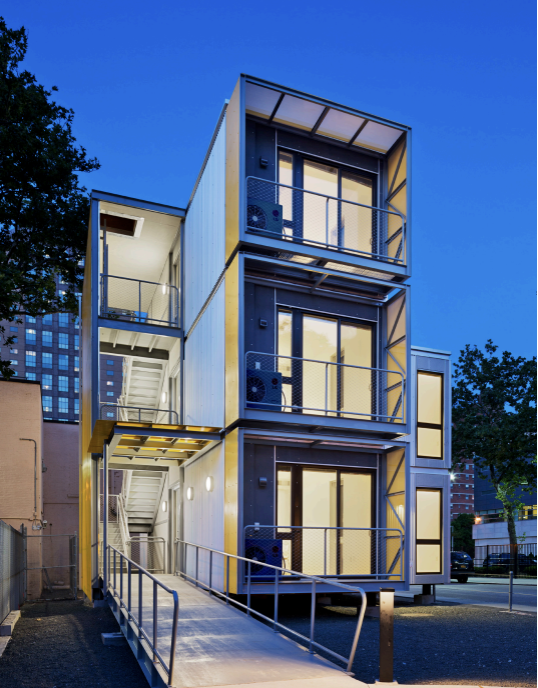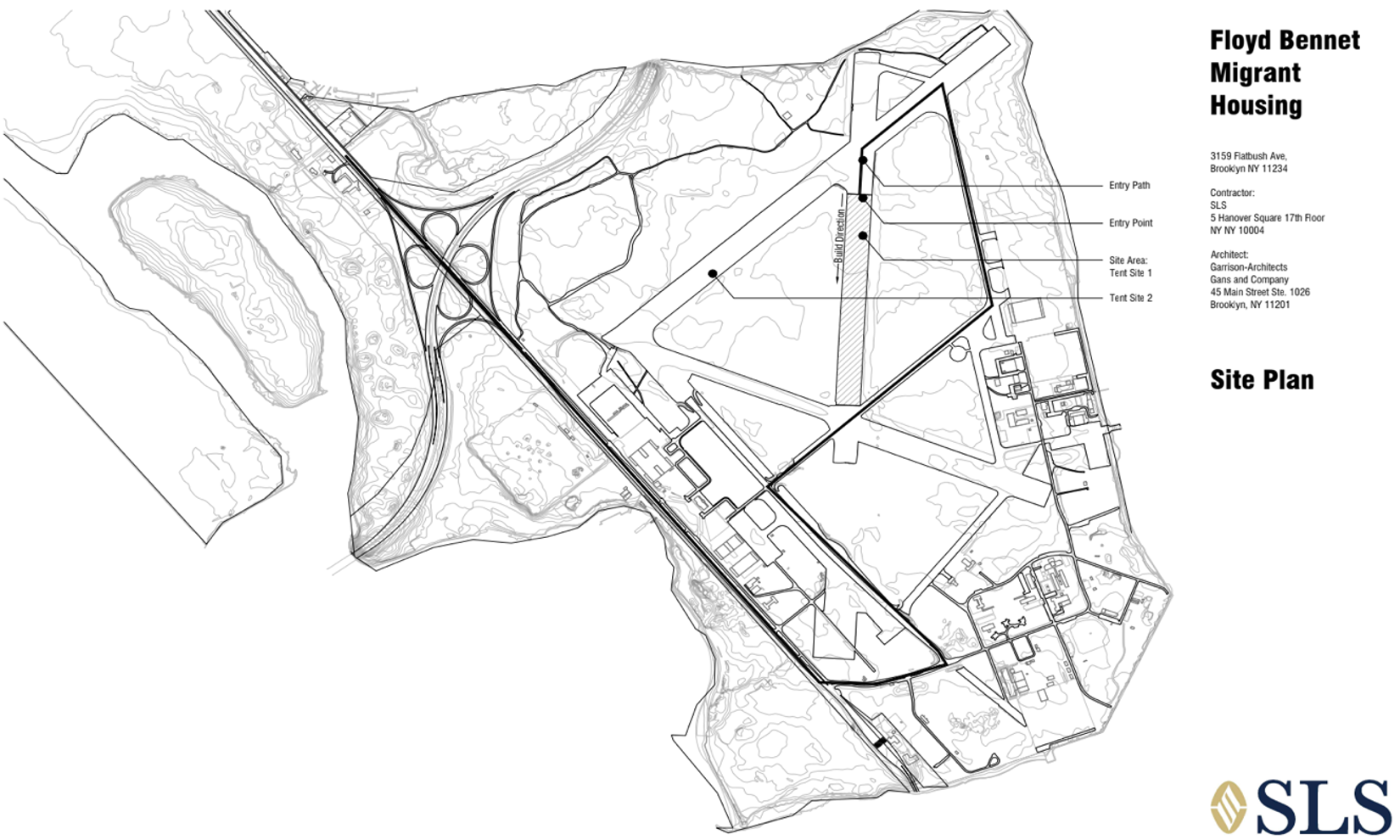Reimagining What’s Possible: Innovative Solutions to Provide Temporary Housing for New Migrants and Asylum Seekers While Also Addressing NYC’s Housing Crisis
Two important proposals and to help address the lack of emergency housing for new immigrant arrivals and the longstanding unhoused and rent-burdened populations in New York City
Since the spring of 2022, over 130,000 migrants from Central and South America, Africa, and the Caribbean have arrived in New York City. Many don’t have friends or family in New York, and as a result are finding emergency housing in the city’s already overburdened shelter system. As of September 2023, the number of people in the city’s shelter system reached a historic high of 88,000. The housing crisis in New York City extends beyond the stressed emergency housing system—there has been a longstanding affordability crisis marked by record high rent increases, rising evictions, and rising levels of homelessness which has been well documented by our partners at Housing Justice for All.
Last month, Immigration Research Initiative organized a roundtable discussion with faculty of the Pratt Institute’s Graduate Center for Planning and the Environment. Together, we shared proposals and brainstormed solutions to these pressing issues facing New Yorkers.
I found it energizing to sit down with over 25 architects, tenants’ rights activists, city planners, housing policy advocates, direct service leaders, emergency response planners, and developers. When new issues arise, a first step is to reach out to colleagues from different parts of the country, and from different fields, to examine policy implications for race, gender, and income equity and to highlight viable solutions. A list of the impressive leaders who joined us in October to discuss better solutions for the housing needs of long time New Yorkers and new immigrants can be found below.
While the city of New York has welcomed large influxes of new immigrants in the past, immigrants prior to this most recent group have typically found their way to New York by staying doubled-up or sleeping on the floor or sofa of someone they know until they can get on their feet. What’s different today is that asylum seekers and others have few or no contacts in New York when they arrive and so, for at least a short time, they wind up in the city shelters. Housing is a basic human right that everyone who calls New York home deserves. The challenge the city faces today is how to address the immediate need for the newest arrivals and also the longstanding population of unhoused and rent-burdened New Yorkers.
New York City has already spent a lot of money to help new immigrant arrivals. In March 2023, the NYC Comptroller’s office estimated that $1.4 billion would be spent in fiscal year 2023 alone. The majority of this spending has gone to emergency housing in ways that does not leave behind any permanent affordable housing. At the October meeting, we discussed two ways that money could be spent better to help newly arriving immigrants while also helping people who were already experiencing New York’s shortage of affordable housing.
Expansion of Housing Vouchers
One proposal we discussed was presented by Murad Awawdeh, director of the New York Immigration Coalition (NYIC)—expansion of housing vouchers.
Expanded vouchers would serve two critical needs. Since long before the recent immigrants began arriving, far too many of the people in shelters have been individuals and families whose need is not temporary shelter but permanent supportive housing. Vouchers are a way for people to move out of shelters and into affordable apartments. And, by reducing the number of people in shelters, vouchers make room for newcomers whose immediate need is, in fact, temporary. Once these newly arriving immigrants begin to get jobs and earn money, they will be able to move out of shelters and, again, make room for others. In many cases these newly arriving immigrants will eventually get work permits through Temporary Protected Status or as asylum seekers, for example, and even those who do not are likely to find work and move out of the shelter as soon as they can.
Expanding vouchers would not only be more humane, it would also be less expensive.
In New York City, restrictions on existing housing vouchers should be lifted so that all New Yorkers, regardless of immigration status, are eligible. Many of the long-term shelter residents are undocumented and making it possible for them to get into apartments would free space for new arrivals.
In their report, the New York Immigration Coalition (NYIC) and Women In Need (Win) estimate the New York City housing voucher program would cost just $72 per night for families living in a 2-bedroom apartment. According to their report, on average, NYC is spending $383 per night, more than five times as much, to shelter households in emergency housing. In August 2023, Mayor Adams reported that there were 57,000 asylum seekers in the care of the city, making up 25,600 households. The NYIC and Win’s report estimates that the cost of sheltering 25,600 households in emergency hotels and shelter per year will be $3.58 billion, vastly more expensive than the $673 million needed to house those same households using city vouchers.
But the city shouldn’t pay for this alone. New York State needs to step up. The approach is not hard to find. Last year the New York State Housing Access Voucher Program (HAVP) was proposed in the state legislature but did not pass. This bill would provide vouchers worth $50 per night.
Both the city and state should expand vouchers. This would be a cost-effective investment in a long-term solution that would take pressure off of the shelter system and allow the Newest New Yorkers to thrive.
Relocatable and Reconfigurable Modular Homes

Image 1 Source: Garrison-Architects, Gans & Co. Floyd Bennet Field Modular Migrant Housing Proposal.
Another way to address the immediate need while also making headway toward creating more affordable housing is to build modular homes that can be quickly put in place in one location and eventually moved and reconfigured in a different part of the city.
After Hurricane Sandy, New York City government not only considered this idea but went so far as to approve a particular design and build a prototype. That’s why, when the new migrants began arriving from the southwestern border of the United States, Garrison Architects and Gans and Company were ready to offer New York City Mayor Eric Adams an innovative plan to build modular homes which can be assembled quickly and can also be converted to long term housing units. Their proposal addresses the immediate need to house new migrant arrivals while also providing a long-term contribution to the affordable housing market in New York for the unhoused New Yorkers who need homes.
Deborah Gans brought this proposal to our joint meeting. We learned about a proposal Garrison and Gans made to build modular, manufactured homes in Floyd Bennet Field that would house 13,500 people at a fraction of the cost that is currently being spent per night on shelters. The modular housing proposal is unique in that the initial construction could be in one place, but the units could be stacked and reconfigured differently for long-term affordable housing.
At the edge of Brooklyn, with views of JFK airport in the distance, lies Floyd Bennet Field. This Field covers 1,300 acres of land and is managed by the National Parks Service. This historic site was New York City’s first municipal airport and now functions as one of the city’s largest green spaces. The modular housing plan would have placed prefabricated units along the existing concrete runways and would see the existing buildings converted to spaces that can be used to offer social services to new migrants and their families.

Image 2 Source: Garrison-Architects, Gans & Co. Floyd Bennett Field Migrant Housing Proposal
Garrison-Architects and Gans & Co. Estimate that New York City spends $210 per night on shelters and hotels for newly arriving immigrants—a considerably lower figure than what is currently being spent. By contrast, they calculate that this modular housing plan would cost only $30 per night. Even based on the conservative estimate of current expenditures that amounts to a saving to the city of $180 per night or $72 million per month. These are just the immediate benefits of this type of construction. In just 16 months there is a capital investment recoup and the modular homes can be deconstructed and reassembled in a more permanent site which will offer new affordable housing for the hundreds of thousands of New Yorkers in need. The initial construction could be in one place, but the units could be stacked and reconfigured differently for long-term affordable housing.
There are also job opportunities in the manufacturing and installation of these homes. Some of the work, such as plumbing and electricity hookups, would create union jobs in New York City. The manufacturing would be done off site, but there is at least the possibility that the manufacturing jobs could also be unionized, and possibly even done in New York State or even in parts of New York City to build political support and maximize the value of state or city dollars spent.
The modular housing proposal seemed to have so much potential, but the Gans’s presentation ended by showing the sad state of affairs in Floyd Bennett Field today. Instead of modular housing, a plan was adopted to put in place 6 to 8 tents that will house between 2,112 and 2,816 occupants. That’s far fewer than could have been on the site than if the city had gone with the modular housing plan that would have accommodated 13,500 people, in far worse conditions. And, of course, when the tents are removed nothing is left, while the modular housing could have been relocated and reconfigured in other parts of the city.
Sadly, the need for new housing has not faded, and our leaders are also faced with an increase of new New Yorkers arriving every week. This is a critical moment that should be leveraged as an opportunity to think outside of the box, broaden our definition of who New Yorkers are, and prioritize the basic human right to shelter.
As we continue to learn more through our discussions with experts from various fields, we will continue to spread the good news of what is possible, and we will continue to share long-term housing solutions that also address our urgent immediate needs.
Emergency Housing and Longterm Solutions: Roundtable Discussion Participants:

African Communities Together, Sophie Kouyate
CAMBA, Melissa Mowery
Collective for Community, Culture and Environment, Meta Brunzema
Commonpoint Queens, Kaylee Watkins
Hagerty Consulting, Cynthia Barton
El Puente de Williamsburg, Daniela Castillo
Hester St, Eva Alligood
Housing Justice for All, Cea Weaver
International Rescue Committee, Olga Byrne, Hannah Presser, and Bethany Dill
Professors at Pratt Institute, Jerrod Delaine, Zehra Kuz, Eve Baron, David Burney, and Sylvia Morse and graduate students Danielle Baez and Christopher Streat
Make the Road NY, Jennifer Hernandez and Jose Lopez
Mutual Housing Association of New York, Ismere Speliotis
Fifth Avenue Committee, Michelle de la Uz
Mothers on the Move, Wanda Salaman
NY Immigration Coalition, Murad Awadeh
New York Civil Liberties Union, Valentina Amazonas, Julian Morales, and Amreeta Mathai Regional Plan Association, Marcel Negret
Deborah Gans, Gans &Co.
Michael Lappin
Special thanks to Juan Camilo Osario Botero, Pratt Institute Graduate Center for Planning and the Environment and Ron Shiffman, FAICP, Hon. AIA, Professor Emeritus, for their collaboration in planning and organizing this event.